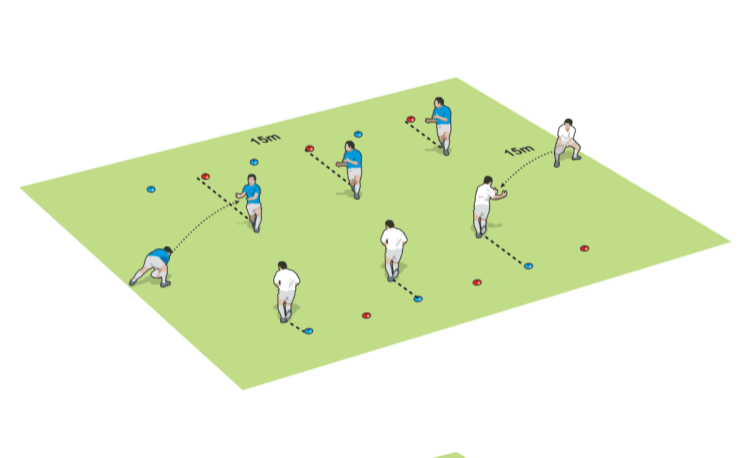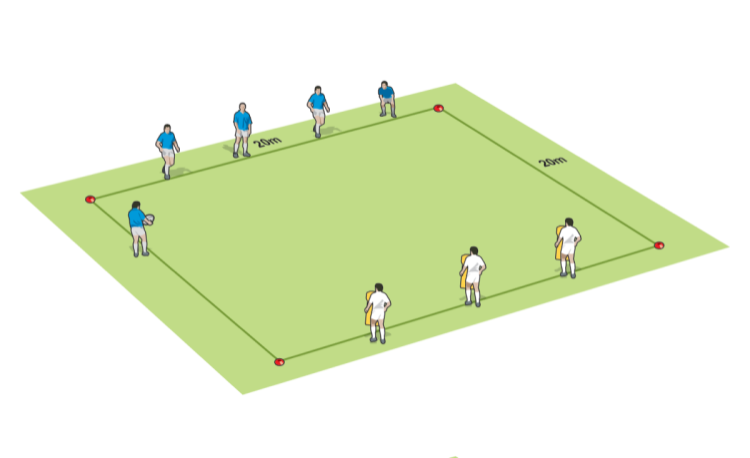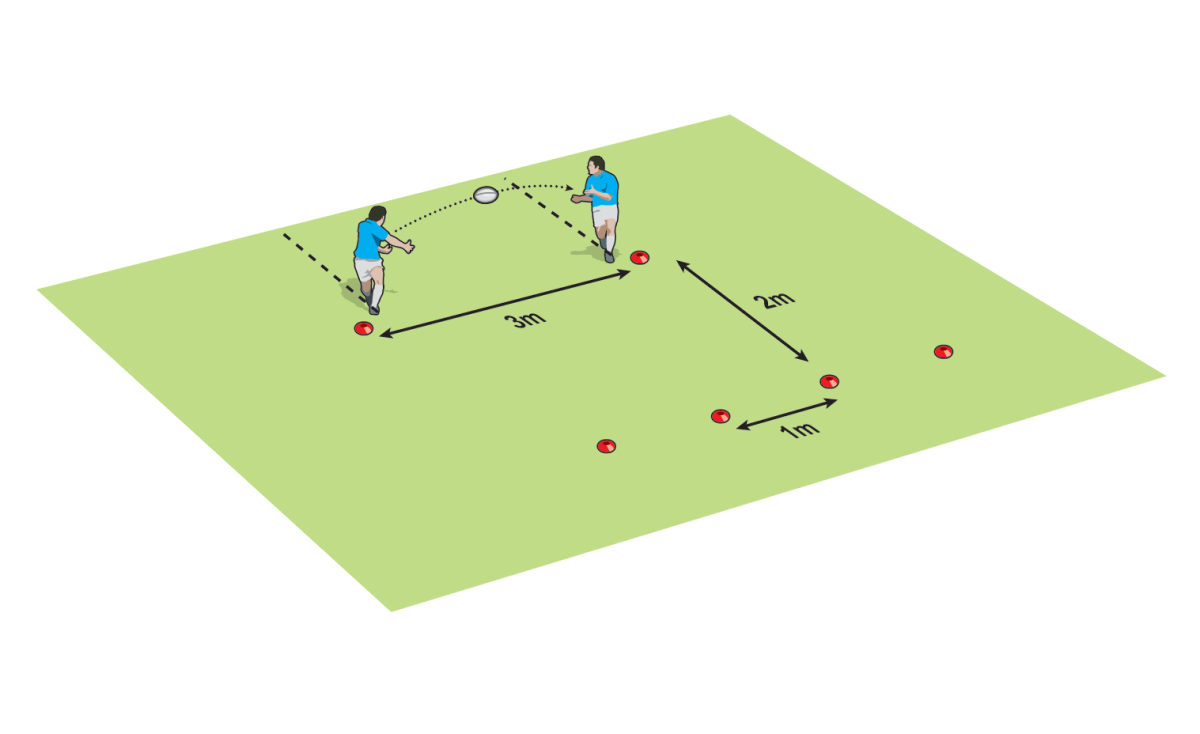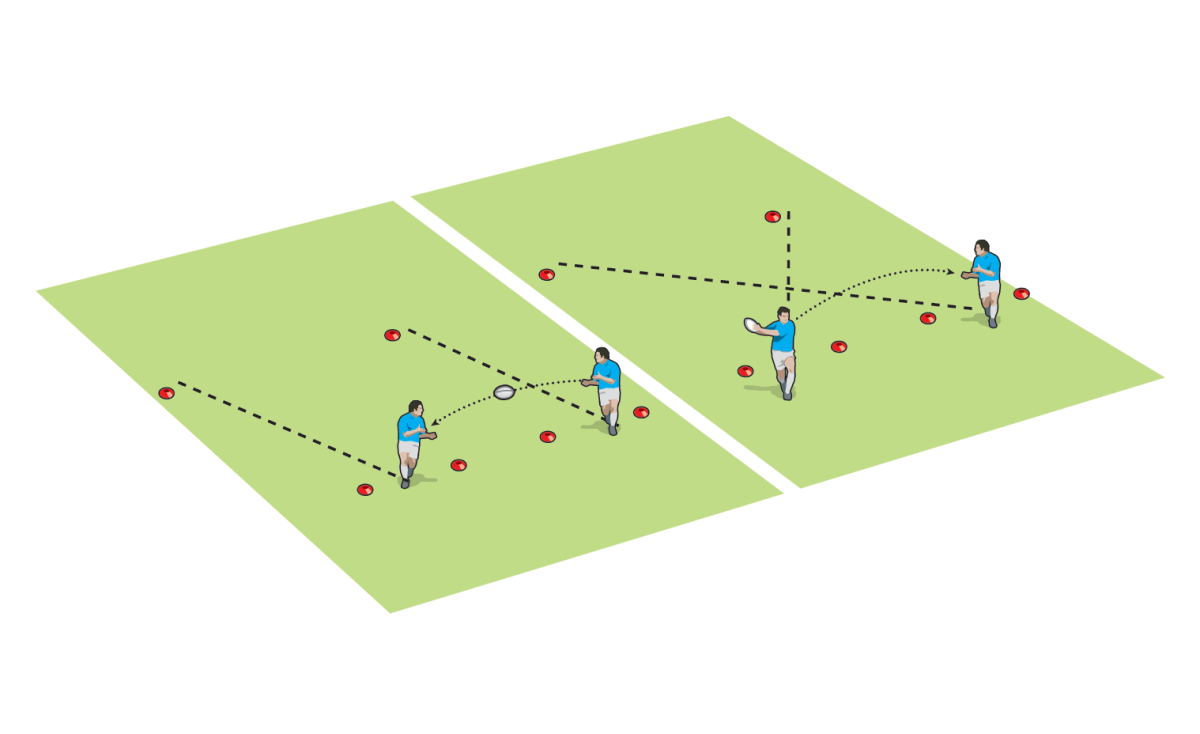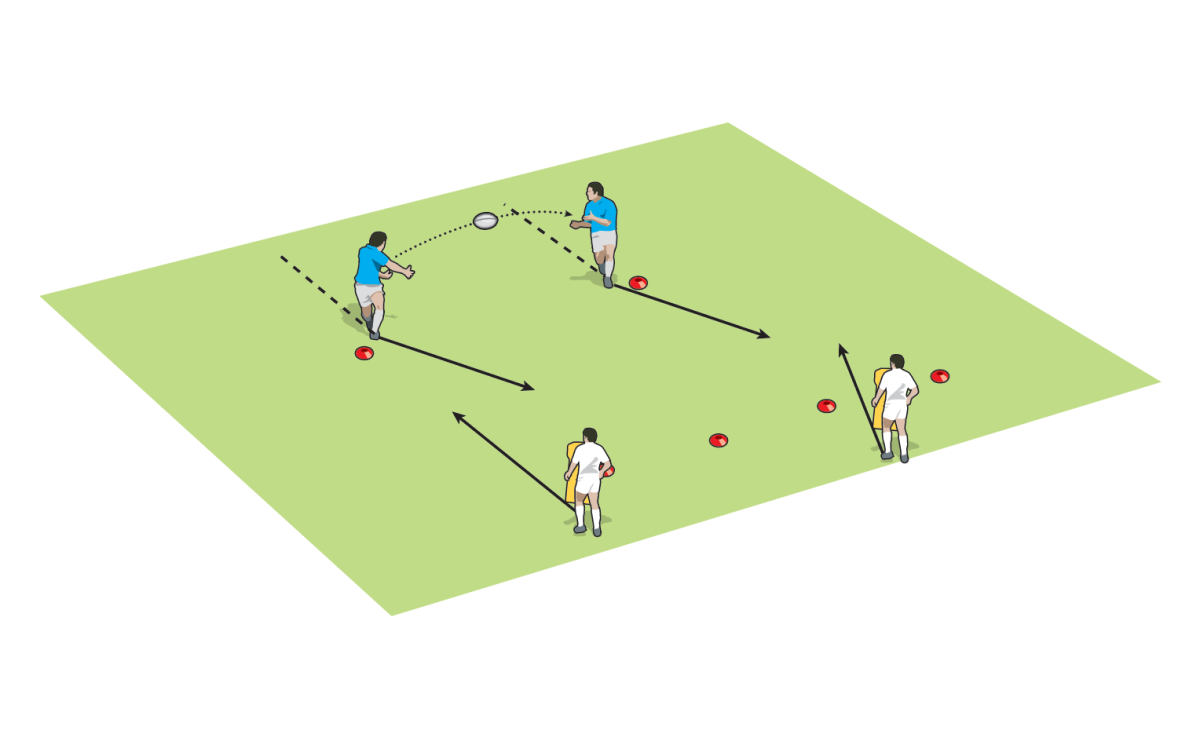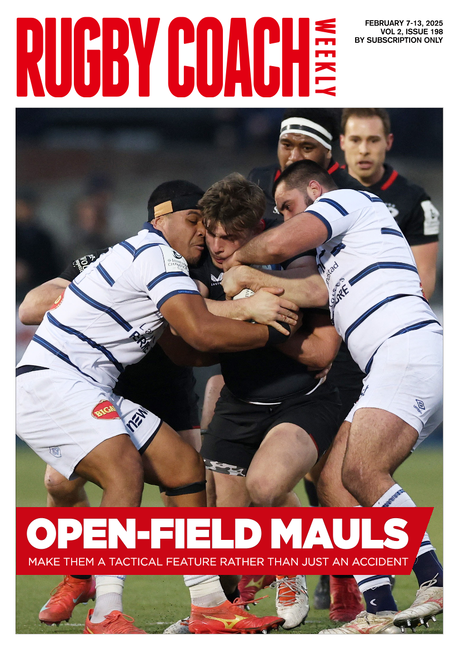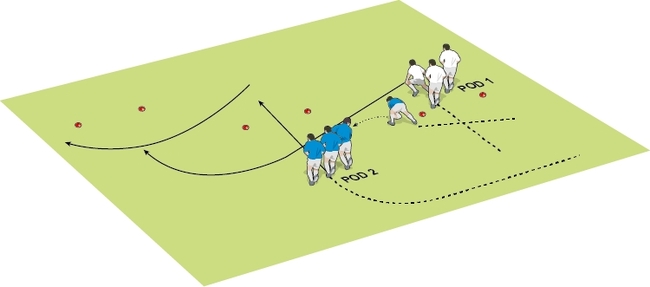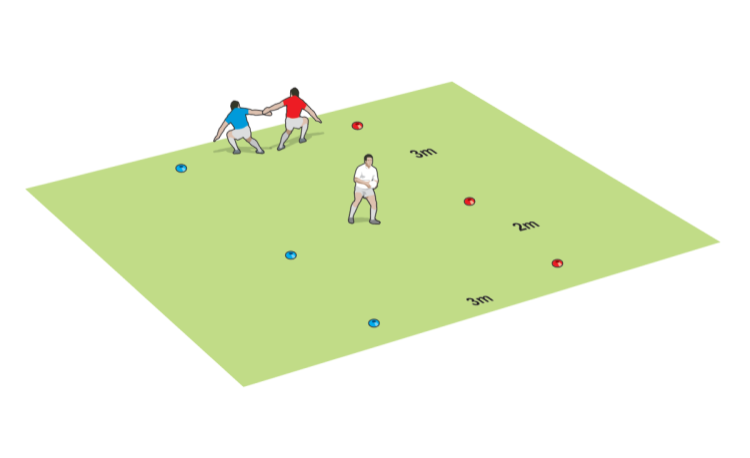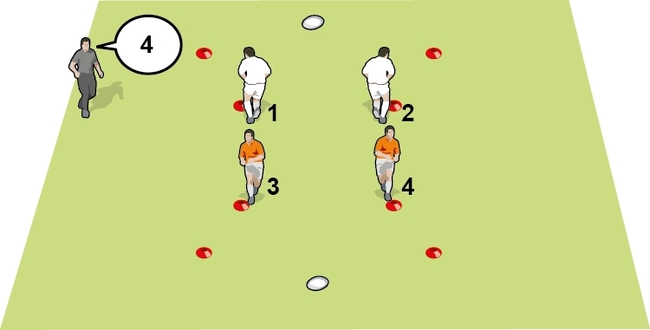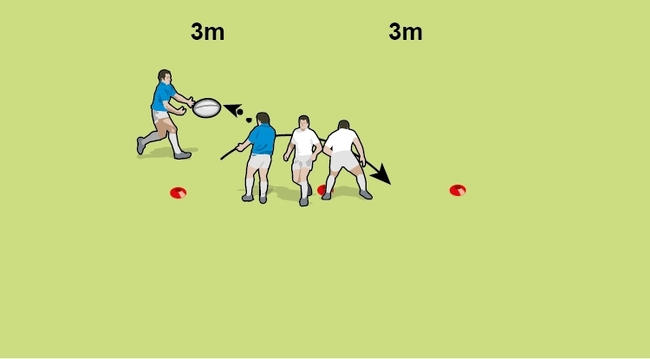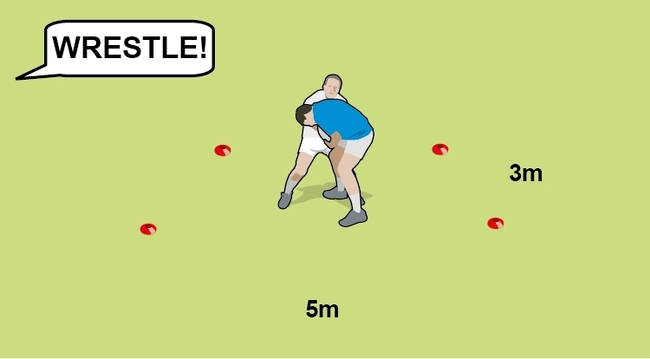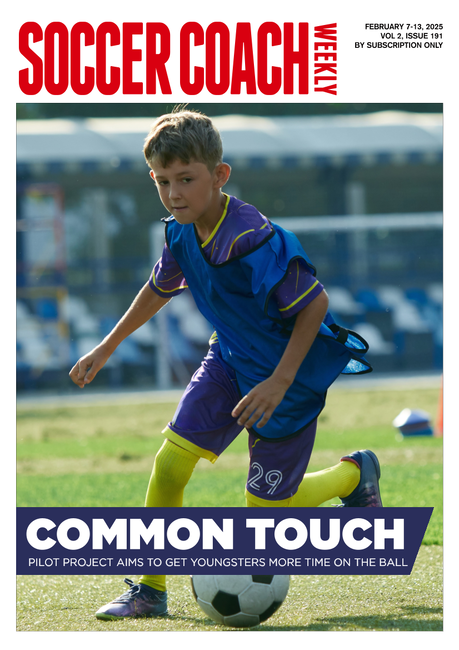Second-touch options
The ball carrier should always be looking for a second touch on the ball so that, once they have passed, they run to be inside or outside the next ball carrier.
WHY USE IT
The angle of the ball carrier dictates the line of the support player. They have to read their team-mate’s intentions and adjust accordingly.
set up
Six cones, a ball and ruck pads.
HOW TO PLAY
ACTIVITY: A passer and receiver run forward 3m. The passer releases the ball to the receiver just before the cone in front of them. The receiver then either cuts left or right through a gate of cones and passes back to the first passer – who has now gone through the other gate – with either an inside pass or ‘loop’ pass. Flip the activity so the original pass is left to right.
DEVELOPMENTS: Add defenders holding ruck pads. They walk or jog forward to put pressure on the ball carrier and support player. The ruck pad-holder in front of the receiver follows the receiver. Change the level of contact, so that the receiver might have to offload out of the tackle, or take contact and have the ball ripped or secured by the original passer.
COACHING POINTS
- First passer only changes direction once they have passed to fully engage the defence.
- Receiver changes angle sharply.
- Players communicate where they are running or supporting.
- The passer and receiver run towards the 3m cones
- The pass is made before the cones are reached
Related Files
-
The receiver either veers through the right-hand gate and passes back...
- ...or they veer through the left-hand gate and use a ‘loop’ pass
-
Add pressure by putting two ruck-pad holders by the gates
- The pad-holder in front of the first receiver must follow them
Newsletter Sign Up
Coaches Testimonials

Gerald Kearney, Downtown Las Vegas Soccer Club

Paul Butler, Florida, USA

Rick Shields, Springboro, USA

Tony Green, Pierrefonds Titans, Quebec, Canada
Subscribe Today
Be a more effective, more successful rugby coach
In a recent survey 89% of subscribers said Rugby Coach Weekly makes them more confident, 91% said Rugby Coach Weekly makes them a more effective coach and 93% said Rugby Coach Weekly makes them more inspired.
Get Weekly Inspiration
All the latest techniques and approaches
Rugby Coach Weekly offers proven and easy to use rugby drills, coaching sessions, practice plans, small-sided games, warm-ups, training tips and advice.
We've been at the cutting edge of rugby coaching since we launched in 2005, creating resources for the grassroots youth coach, following best practice from around the world and insights from the professional game.

